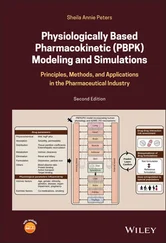160 158
161 159
162 160
163 161
164 162
165 163
166 164
167 165
168 166
169 167
170 168
171 169
172 171
173 173
174 174
175 175
176 176
177 177
178 178
179 179
180 180
181 181
182 182
183 183
184 b1
185 184
Wiley Series in
A complete list of the titles in this series appears at the end of this volume.
New Horizons in Modeling and Simulation for Social Epidemiology and Public Health
Daniel Kim

This edition first published 2021
© 2021 John Wiley & Sons, Inc.
All rights reserved. No part of this publication may be reproduced, stored in a retrieval system, or transmitted, in any form or by any means, electronic, mechanical, photocopying, recording or otherwise, except as permitted by law. Advice on how to obtain permission to reuse material from this title is available at http://www.wiley.com/go/permissions.
The right of Daniel Kim to be identified as the author of this work has been asserted in accordance with law.
Registered Office John Wiley & Sons, Inc., 111 River Street, Hoboken, NJ 07030, USA
Editorial Office 111 River Street, Hoboken, NJ 07030, USA
For details of our global editorial offices, customer services, and more information about Wiley products visit us at www.wiley.com.
Wiley also publishes its books in a variety of electronic formats and by print‐on‐demand. Some content that appears in standard print versions of this book may not be available in other formats.
Limit of Liability/Disclaimer of Warranty While the publisher and authors have used their best efforts in preparing this work, they make no representations or warranties with respect to the accuracy or completeness of the contents of this work and specifically disclaim all warranties, including without limitation any implied warranties of merchantability or fitness for a particular purpose. No warranty may be created or extended by sales representatives, written sales materials or promotional statements for this work. The fact that an organization, website, or product is referred to in this work as a citation and/or potential source of further information does not mean that the publisher and authors endorse the information or services the organization, website, or product may provide or recommendations it may make. This work is sold with the understanding that the publisher is not engaged in rendering professional services. The advice and strategies contained herein may not be suitable for your situation. You should consult with a specialist where appropriate. Further, readers should be aware that websites listed in this work may have changed or disappeared between when this work was written and when it is read. Neither the publisher nor authors shall be liable for any loss of profit or any other commercial damages, including but not limited to special, incidental, consequential, or other damages.
Library of Congress Cataloging‐in‐Publication Data
Names: Kim, Daniel (author).
Title: New horizons in modeling and simulation for social epidemiology and public health / Daniel Kim.
Other titles: Wiley series in modeling and simulation.
Description: Hoboken, NJ : Wiley, 2021. | Series: Wiley series in modeling and simulation | Includes bibliographical references and index.
Identifiers: LCCN 2020027470 (print) | LCCN 2020027471 (ebook) | ISBN 9781118589304 (hardback) | ISBN 9781118589427 (Adobe PDF) | ISBN 9781118589571 (epub)
Subjects: MESH: Social Determinants of Health | Public Health | Epidemiologic Methods | Models, Theoretical | Computer Simulation | Social Medicine
Classification: LCC RA418 (print) | LCC RA418 (ebook) | NLM WA 30 | DDC 362.1–dc23
LC record available at https://lccn.loc.gov/2020027470LC ebook record available at https://lccn.loc.gov/2020027471
Cover Design: Wiley
Cover Images: © vectorfusionart / Shutterstock
Francesco FigariDepartment of Economics University of Insubria Varese Italy
Ross A. HammondCenter on Social Dynamics & Policy The Brookings Institution Washington, DC USA; Brown School Washington University in St. Louis St. Louis, MO USA; and The Santa Fe Institute Santa Fe, NM USA
Daniel KimBouvé College of Health Sciences Northeastern University Boston, MA USA; and School of Public Policy and Urban Affairs Northeastern University Boston, MA USA
Emanuela LezziDepartment of Economics University of Insubria Varese Italy
Joseph T. OrnsteinBrown School Washington University in St. Louis St. Louis, MO USA
Hilde PhilipsCentre for General Practice University of Antwerp Antwerpen Belgium
Gerlinde VerbistCentre for Social Policy University of Antwerp Antwerpen Belgium
I am well acquainted with the author of this book New Horizons in Modeling and Simulation for Social Epidemiology & Public Health , Dr. Daniel Kim, and the book’s contributors including Dr. Ross Hammond. As the former director of the Systems Science Program in the Office of Behavioral and Social Sciences Research (OBSSR) of the National Institutes of Health (NIH), I have had a bird's eye view of this emerging area which I have written extensively about elsewhere (Mabry and Kaplan, 2013; Mabry et al., 2008, 2013).
The NIH and OBSSR have supported a variety of educational opportunities in systems science, such as the Symposia Series on Systems Science and Health (2007; https://www.preventionresearch.org/conferences/training/2007‐symposia‐series‐on‐systems‐science‐and‐health/) and the week‐long immersion course, Institute on Systems Science and Health ( ISSH ), which ran annually from 2009 to 2012. More recently, the NIH has funded short courses such as Dynamic Systems Science Modeling for Public Health (PIs: Bruch, Hammond, Osgood; healthmodeling.org). However, one of the noteworthy gaps in the field is adequate instructional material in book form devoted to systems science applications to public health.
In 2012, Drs. Kim and Hammond both participated (Dr. Kim as a trainee and Dr. Hammond as the lead instructor) in the agent‐based modeling (ABM) track of the week‐long ISSH training course, at Washington University in St. Louis, hosted by Drs. Peter Hovmand and Doug Luke. As a cofounder and producer of ISSH (with Dr. Bobby Milstein, then at Centers for Disease Control and Prevention [CDC]), I had the privilege to witness the germ of this book. Dr. Kim has taken the best he has to offer in the social determinants of health and microsimulation modeling, complemented it with the expertise of Dr. Hammond in ABM and of other excellent book contributors with command of their subject areas, and produced what is destined to become a key resource for public health students, professors, and practitioners. New Horizons in Modeling and Simulation for Social Epidemiology & Public Health , with its focus on agent‐based modeling, microsimulation, and social determinants of health, is the perfect complement to the recent entrants in this area (El‐Sayed and Galea, 2017; Kaplan et al., 2017) as well as Dr. Thomas Valente’s (2010) impactful Social Networks and Health .
As indicated by its title, New Horizons in Modeling and Simulation for Social Epidemiology & Public Health is designed to give graduate students in public health an introduction to modeling and simulation to address research questions in social epidemiology and public health. While this is an excellent resource for this audience, it is sure to become a staple on the bookshelf of not only students but professors in public health and many other health‐relevant disciplines. The book provides an excellent introduction to social epidemiology followed by classic case examples in ABM (Schelling model and study of the historic Anasazi population; also within the book's covers the reader will find essential background on ABM use in public health including an overview of ABM for infectious disease modeling, obesity, and tobacco control) and highlights some of the seminal contributions Dr. Hammond has made to the field. The book contains a comprehensive introduction to microsimulation including how to make informed choices regarding time and space, data, policy rules and scope, population structure, validation, and more. An application section illustrates microsimulation models used in population health. A chapter is devoted to educating the reader about various microsimulation models in the social sciences (economics, demography, geography, transportation, and environmental sciences). The book never loses its focus on the social determinants of health, and there are valuable chapters devoted to reviewing the literature on microsimulation models and social determinants of health including important recent contributions by Dr. Kim ( Chapter 9), as well as the potential of microsimulation to explore other questions in this vein ( Chapter 10). Finally, the book lays out a conceptual model and empirical examples of how ABM and microsimulation can be integrated for additional impact.
Читать дальше













